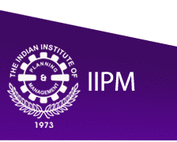A while ago, amidst suitable media glare and fanfare, Coke – along with a cluster of corporate global heavies – signed an agreement to categorically not initiate, indulge, involve or participate in any activity that consciously targets kids under a certain age. “We have a global Responsible Marketing Policy that covers all our beverages, and we do not market any products directly to children under 12,” says The Coca Cola Company.
They (rightly) reckoned that directly marketing Cola products to children could send out wrong signals – as the general inference is that sugary and carbonated drinks lead to not only obesity and bone loss, but a host of other health issues. In children, the effects are worse and longer lasting. While all right-thinking, concerned parents and elders applauded this fine, worthy CSR move (“Hey, the guys have a conscience, after all!”), one fine morning came along a spanking new ad of Coke (“Ummeedon Wali Dhoop, Sunshine Wali Aasha...”), which had a most hummable tune and cinematography worth its weight in gold. Shockingly, almost throughout the advertisement, children were featured singing the song – some looking quite apparently below the age of 12. Worse, the ad ends with a statement, “Millions share a Coca Cola everyday.” This magazine had instantly picked up the issue in the last fortnight and pointed out the clear fly-by given to the much touted voluntary decision of Coke to not market to children.
To its fair credit, the TVC is charmingly conceived, executed and packaged, totally children-friendly, superbly written – by McCann’s gifted, multi-faceted head honcho Prasoon Joshi – and reinforced with an eye opening series of facts juxtaposed smartly to entertain and enlighten in one fell swoop. In fact, Ummeedon Wali Dhoop, Sunshine Wali Asha, today, is a hugely loved and popular anthem with kids, everywhere, because of its simplicity, charm and inspirational tone. So, what’s the problem?
That’s exactly the problem, per se. The more children that like the ad, the more the probability of them falling for the cleverly positioned ruse. Was this an inadvertent mistake on the part of Coke (featuring children, that is) or is this a supremely shrewd advertising campaign meant to raise hackles? Veteran Ad person Esha Guha is the first to fling her glove into the arena and declare war! “Prasoon is a terrific writer... You give him a brief and he’ll give you a song! However, this entire TVC would’ve been great had not the ‘millions share a Coca Cola everyday’ come in as last line – which, to me, is a sneaky way of leveraging product placement! It’s a piece of brilliantly crafted camouflage, very creatively distracting to represent, in wonderfully inspirational and uplifting manner, hope, sunshine, optimism – the works.” Dentsu’s NCD Soumitra Karnik – ex-JWT, creative head who master-minded several award-winning campaigns, including the memorable Youngistaan – is not so sure and believes that it is a conflict of letter versus spirit. “Agreed, in theory it may have strayed a bit, but overall the TVC offers a brilliantly, optimistic, warm and feel-good vibe with great lyrics and most significantly, sung by children in joyous collectivity. Kids are our greatest change-agents and their bright shining faces, energetically singing those exalted lines, for me, scores over a technical flaw,” says Karnik. He (all set to change Dentsu into a solidly creative agency) believes that compared to the mess around (scams, end of world in 2012, drubbing at Australia) this TVC represents a welcome change. So, he’s willing to “let this one pass!”
Post-grad student Shrishti Jha agrees. She feels that most people are unlikely to view this TVC in a “negative and narrow-minded way” and will view it for the joyous ambience it creates, “The lyrics are outstanding and so is the overall presentation! Where does the camouflage and surrogate factor come in? It’s neither a product hard-sell at all, nor does it nudge you to lean on the Coke Corp image. Like Hum Mein Hai Hero, Ummeedon Wali Dhoop charges you up in a charming, vigorous and vibrant way infusing positive emotions in your being. I love it. So do my friends. Forget the killjoys…!” Paris-based and Santiniketan-trained graphic artist Pia Sen, is up next. The pretty and petite 32-year old (who visits India regularly is fully clued-in to this issue) comments, “The TVC is crafted in a deceptively innocent manner that gives this impression of upliftment and optimism, very successfully. Intelligently choreographed, it brings the millions share… line to form a telling conclusion about the product as a feel-good, bonding product. [Yet], for me, somewhere, it is unethical and goes against the spirit of the signed document. Like in life, intangibles and grey areas are always the trickiest.”
Mitali Lahiri, Senior Writer of the Kolkata-based Ad Agency Magnum Intergrafix, is not amused. “It’s obviously done in a clever, slick way to make friends and influence people! The chocolaty topping is suitably sensitive with radiant children looking forward to a cheerful, sunshine planet… a world that hits more on love than hate… sharing, caring, trees, mats and fairy tales in place. So far, so good – but hey, how does Coca Cola feature in all of this, guys? For a while this TVC works like a happy drug and just as you are about to succumb, Coke enters to claim millions who love Coca Cola, opens happiness! But is GenNext supposed to share happiness with less calcium in their bones, broken bones, unhealthy disposition?!”
The gurus of advertising have repeatedly said that underpromise, overdeliver. At least don’t promise what you can’t deliver. Given the killing effects of competition, is Coca Cola slowly but surely revoking the voluntary decision they had taken on a global scale? I don’t have the answer to that. All I can tell is that I love the song, but won’t let my kids have the drink. Over to you, gentle reader…!
For more articles, Click on IIPM Article
Source : IIPM Editorial, 2012
An Initiative of IIPM, Malay Chaudhuri and Arindam chaudhuri (Renowned Management Guru and Economist).
For More IIPM Info, Visit below mentioned IIPM articles.
IIPM ranked No 1 B-School in India
domain-b.com : IIPM ranked ahead of IIMs
IIPM: Management Education India
Prof. Rajita Chaudhuri's Website
IIPM in sync with the best of the business world.......
Arindam Chaudhuri on Internet.....
Arindam Chaudhuri: We need Hazare's leadership
Professor Arindam Chaudhuri - A Man For The Society....
IIPM: Indian Institute of Planning and Management
Planman Technologies
IIPM Contact Info
IIPM History
IIPM Think Tank
IIPM Infrastructure
IIPM Info
IIPM: Selection Process
IIPM: Research and Publications
IIPM MBA Institute India
IIPM Best B School India
--------------------------------------------------------------------------------------------------------------------------


 RSS Feed
RSS Feed